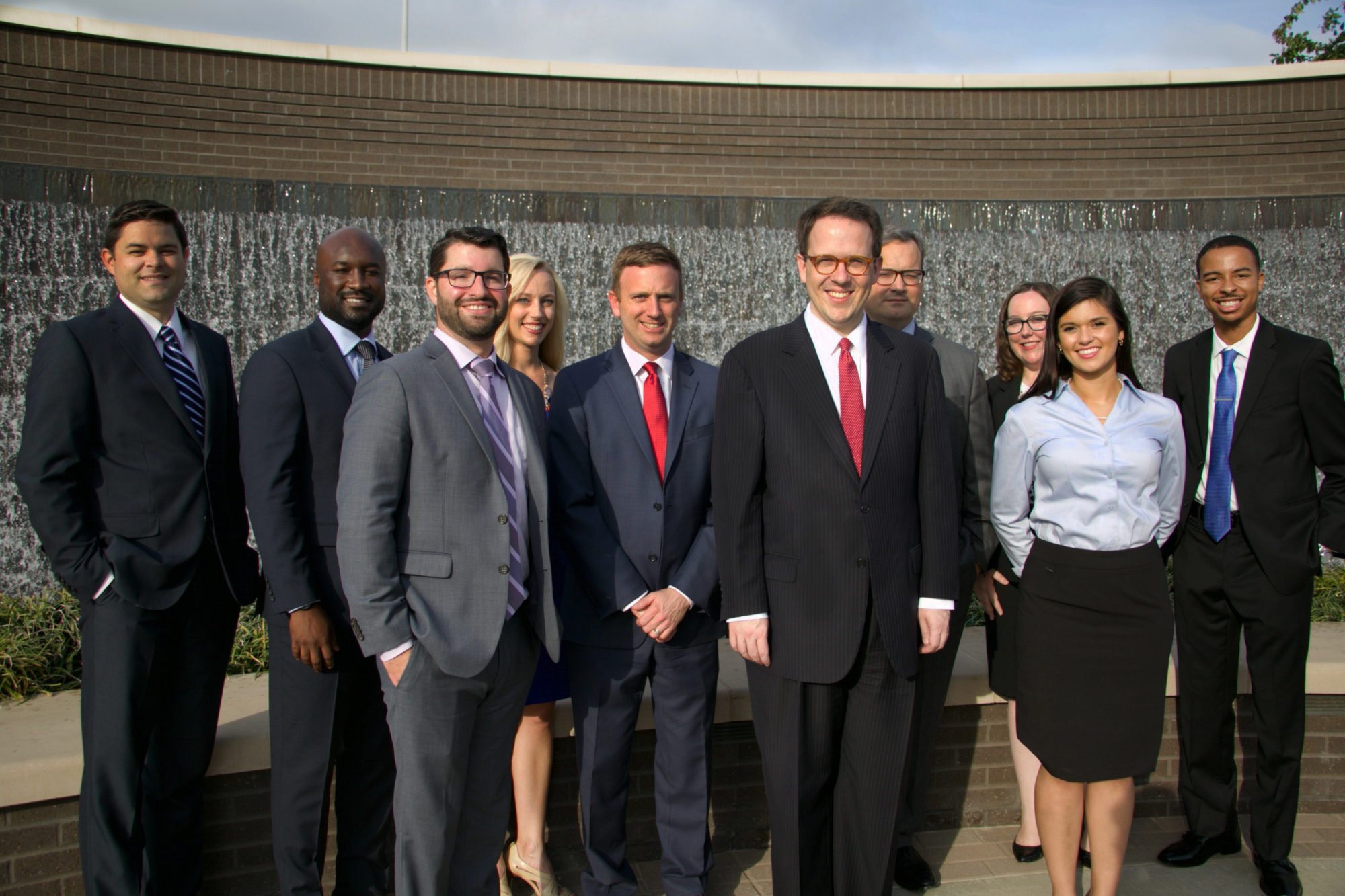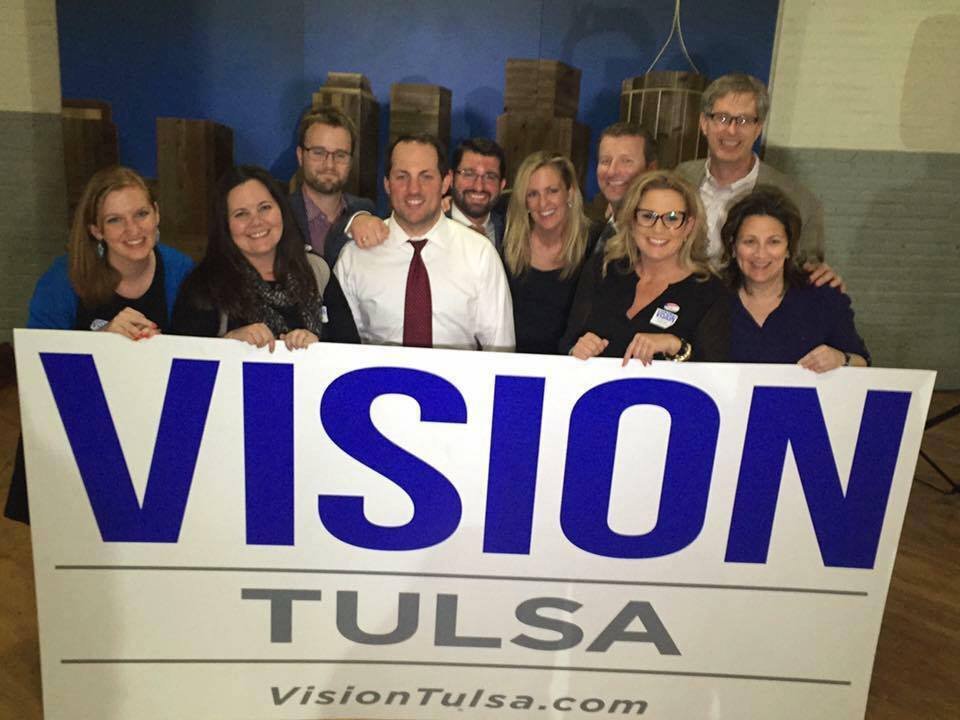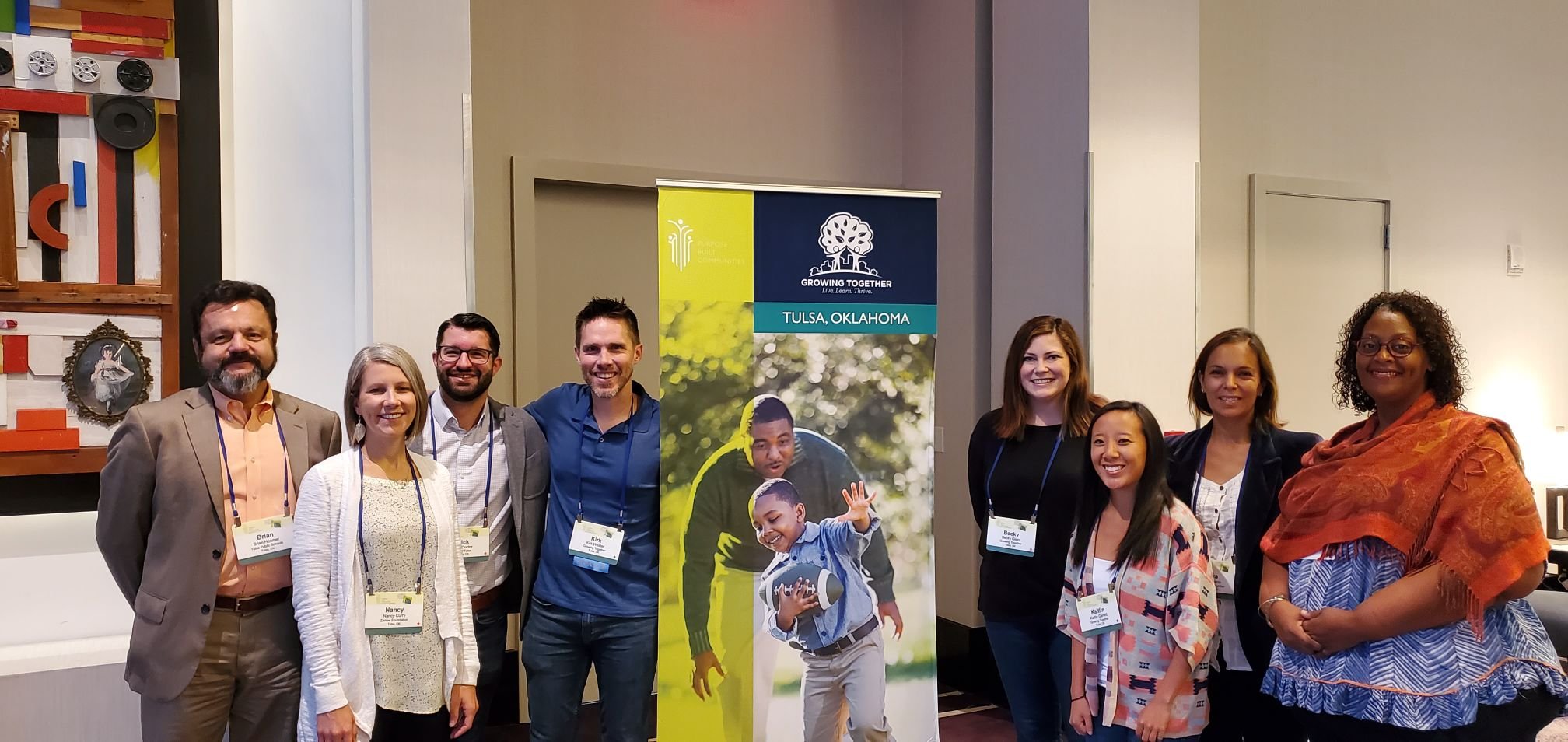
Nick has 15 years of progressive experience in local and state politics and policy, organizational leadership, and team building and mentorship.
He is a results-focused strategist with expertise in leading organizations, managing diverse teams and complex projects, and implementing equity-focused solutions.
Policy Creation & Implementation
I’ve created, advocated for, and implemented public policy directly addressing systemic inequities, including affordable housing, transportation, education, internet access, land use and economic development, and public investment.
-
One of my proudest examples of developing and implementing new policy was in the creation of Tulsa’s first affordable housing strategy in 2019.
Building Support Through Inclusion
When introducing new areas of policy, I’ve found that building broad support from the onset is critical. I used the hiring process for our Housing Policy Director to do so, creating a housing strategy advisory board comprised of impacted community members, developers, funders, and social service providers.
Developing Comprehensive & Equitable Strategies
I was fortunate to hire a deeply talented individual, and together we built an ambitious, comprehensive affordable housing strategy. From its inception, we were clear that its focus was on addressing historic and current housing inequities. We used examples of historic discrimination, current housing data, and residents’ stories to provide a clear picture of where housing inequities were greatest, and we targeted investments to communities and individuals whose needs were greatest.
Creating Meaningful Results
The strategy resulted in TIF incentives increasing home ownership and minimizing displacement, $9MM in public and private funding for the Affordable Housing Trust Fund in year one, and meaningful policies to disrupt the frequency of evictions. This work cemented Tulsa’s Housing Policy Director as a trusted community leader for future policy solutions.
-
Cities often struggle to meaningfully impact educational outcomes. But improving educational attainment is the strongest way to increase opportunity for residents and address systemic inequities.
To identify where we could be most impactful at the City, I partnered with ImpactTulsa, a local education nonprofit, to integrate their Child Equity Index (CEI) into City decision-making.
Increasing Internet Access
In the early stages of the pandemic, the City and ImpactTulsa led Tulsa’s effort to provide internet access to more than 20,000 families. We used the CEI and Census data to target Census tracts with the lowest access and reach out to individual families.
Tax Increment Financing (TIF) Policies
We dedicated a portion of Tulsa’s TIF districts — which use economic development projects to generate revenue for public improvements — to Tulsa Public Schools, with the stipulation they use this funding to remove barriers impacting students’ success identified by the CEI.
Prioritizing Public Infrastructure
The CEI made it clear that neighborhood factors like walkability and perceptions of safety impact student attendance. We used this information to prioritize where we installed new street lights and filled sidewalk gaps, making connections between neighborhood schools and their families.
-
A core part of my role at the City was providing meaningful transportation access to those who needed it most. We knew this was critical for residents to meet their basic needs, pursue educational and professional opportunities, and lower the cost burden of vehicle ownership.
I tackled this challenge in a number of ways:
Expanding Bus Rapid Transit Line
When I first joined the City of Tulsa, I learned that the planned Bus Rapid Transit (BRT) line — Tulsa’s first, and one of the first 10 in the country — stopped short of where it was needed most: a portion of Tulsa where vehicle ownership was lowest and transportation costs were highest.
I identified additional funding to extend the BRT line an additional two miles, and secured unanimous Council support for the reallocation. We also engaged in a months-long outreach program to residents, ensuring they knew how to access this new service and removing all barriers we could identify.
New BRT Line Planning
When the opportunity came to plan for our second BRT line, I managed a team from the Tulsa Planning Office to do so through an equity lens: identifying a route that prioritized access for lower-income, lower vehicle ownership neighborhoods and building connections to basic needs and educational and employment opportunities.
Dealing with Electric Scooters
One of my odder policy assignments was figuring out how to deal with electric scooters: a new technology being dropped in communities and causing chaos as cities struggled to develop a framework for their use.
I reached out to the nation’s two leading scooter companies directly and made it clear they needed to work with us before launching in Tulsa. Together, we developed a framework for electric scooters that emphasized their ability to solve “first/last mile” challenges in public transit. And I insisted that 20% of their fleet be located along Tulsa’s transit routes in underserved neighborhoods.
Because of this proactive work and collaborative policy development, the launch of scooters in Tulsa went more smoothly than in any other community. Our policies became best practices nationally. And they became an integral part of our broader transportation strategy.
Complex Project Management
I’ve directly managed $1.7MM ballot initiative political campaigns, overseen $510MM+ in publicly-financed capital projects, and led diverse coalitions focused on solving some of our community’s most complex and challenging issues.
One of my favorite projects includes seeing Vision Tulsa from start to finish.
-
As Senior Vice President of Government Affairs at the Tulsa Regional Chamber, I managed the political campaign to pass Vision Tulsa in 2016.
In four months, I hired a team of five consultants, created and guided advisory and fundraising committees, raised $1.7MM, and effectively invested these funds — navigating cash flow difficulties and prioritizing immediate needs. All four ballot initiatives passed (three municipal, one county) with at least 60% support.
All of this was done during a contentious mayor’s race, which required strong relationship management and political decision-making to ensure both candidates felt meaningfully included and that the campaign remained above their political battles.
-
After joining the City of Tulsa in 2017, I was tasked with implementing the Vision Tulsa capital program: 37 projects totaling more than $510MM.
Working with multiple City departments, we prioritized funding to complete 80% of projects within the first five years. I oversaw the full suite of projects, each requiring engaging unique community coalitions, hiring design and construction contractors, navigating challenging budget and site constraints, and negotiating lease and management agreements — all while ensuring the highest and best outcomes for Tulsa residents.
Equity-Focused Results
Throughout all of my work, I bring a consistent focus on ensuring equitable results: instituting racial equity tools in policy creation and evaluation, using educational and neighborhood data to target investments, and including those closest to the problem in developing the solution.
An example of these qualities in practice is my leadership of the internet Access Task Force, which mobilized to secure free internet access to more than 20,000 Tulsa families immediately after the start of the pandemic lock-down.
-
In partnership with ImpactTulsa, I convened the Internet Access Task Force — a group of 52 educational leaders, parents and students, tech and data experts, philanthropies, and internet providers.
Over five weeks we built four unique solutions that provided an immediate response (hot spots), more sustainable mid-term approaches (fully subsidized internet access for individual families), and long-term answers that would persist beyond COVID (free WiFi in all public housing sites and community WiFi at transit stations, libraries, and schools). We also established a multi-lingual outreach team to ensure all families could navigate internet and tech challenges.
We applied an equity lens to every level of our work. Using Census and educational data from our school districts, we targeted neighborhoods with the lowest internet access and individual families who had missed online classes. We included families throughout the planning process, ensuring solutions were easy to navigate. Our outreach team was fluent in Tulsa’s six most common languages.
Finally, we pushed through legal and political barriers to ensure the strongest implementation of our solutions. I navigated the City’s purchasing process to ensure sole procurement for Tulsa’s two broadband internet providers, avoiding a lengthy competitive bidding process. I lobbied the State of Oklahoma for $5.6MM in CARES Act funding (the City of Tulsa did not meet the population threshold for the initial round of funding). And I negotiated contracts with AT&T and Cox to remove credit and financial barriers for individual families, basing internet subscriptions upon the faith and credit of the City of Tulsa, not individual families — a first in the nation.
Our solutions quickly became models for both the State of Oklahoma and other cities across the country looking for opportunities to support their school districts and families.
Team Management & Mentorship
The work I have found most rewarding is recruiting, mentoring, and growing talented individuals and diverse teams: from recent college graduates new to the political world, to deeply talented and experienced experts, to contracted individuals and organizations, to community members.
-
One of my favorite elements of consulting is my ability to coach organizational leaders and mentor staff members.
With organizational leaders, I focus on creating space for strategic thinking that often gets sidelined in the fires of day-to-day management. As an example, I worked with the NAACP Legal Defense Fund and Terence Crutcher Foundation to build a prioritized policy agenda: using historic reports and a knowledge of current events to ground the agenda in the organization’s values, identify their most important issues, and develop an ambitious but actionable agenda that acknowledged political realities.
With team members, I focus my mentorship on building influential relationships with decision makers and transferring my knowledge of issues and the political process. With the Children’s Funding Project and ImpactTulsa, I helped a new Policy Director build relationships with key community leaders and build her knowledge of local political dynamics.
-
My proudest example of team building and mentorship is the diverse team and culture I built as Chief of Community Development & Policy, where I recruited emerging leaders from philanthropic, corporate, and non-profit sectors to work in local government for the first time.
This team included recent college graduates, whom I focused on mentoring in the basics — from scheduling meetings to writing policy memos — while also including them in our biggest decision-making conversations and ensuring access to top leadership.
For the three deeply talented and experienced women I was fortunate to recruit, I focused on using my knowledge to help them navigate the complexities of governmental legal and political processes, while recognizing the unique challenges they faced due to their identities.
With each staff member, we regularly discussed personal and professional growth goals and created pathways to achieve them. Each person on that team has since advanced into significant leadership positions.
-
When promoted to Senior Vice President at the Tulsa Regional Chamber, I focused on building a team with complementary skill sets, diverse political beliefs, and a passion for improving our community.
I was fortunate to recruit a talented Vice President, and we built performance goals with two areas of focus: skill building in areas of our team’s work that were new to her, and including her in departmental leadership decisions as a thought partner and to ensure she had a knowledge of its operations. When I was recruited to join the mayor’s office, she was an easy choice for the SVP role.
My role also included managing three contract lobbyists, as well as project-based consultant teams when running political campaigns. Here, I prioritized hiring consultants with complementary skill sets and strategic relationships. I ensured they aligned with our organization’s values and were well-respected in their work. And I included them in our department’s strategy sessions to ensure buy-in and benefit from their experience.
Organizational Leadership
I’ve served on Executive Leadership Teams (ELTs) for the City of Tulsa (2,000 employees and $945MM annual budget) and Tulsa Regional Chamber (50+ employees and $16MM annual budget) — establishing organizational policy, managing complex budgets, and building a culture of collaboration and partnership.
My role on ELTs often centers on culture and problem-solving. I work to ensure the ELT is a united team where leaders can bring their greatest challenges for support and solutions, where we integrate our departmental goals and strategies to maximize our impact, and where we focus on building policies that mentor and grow our team members.




